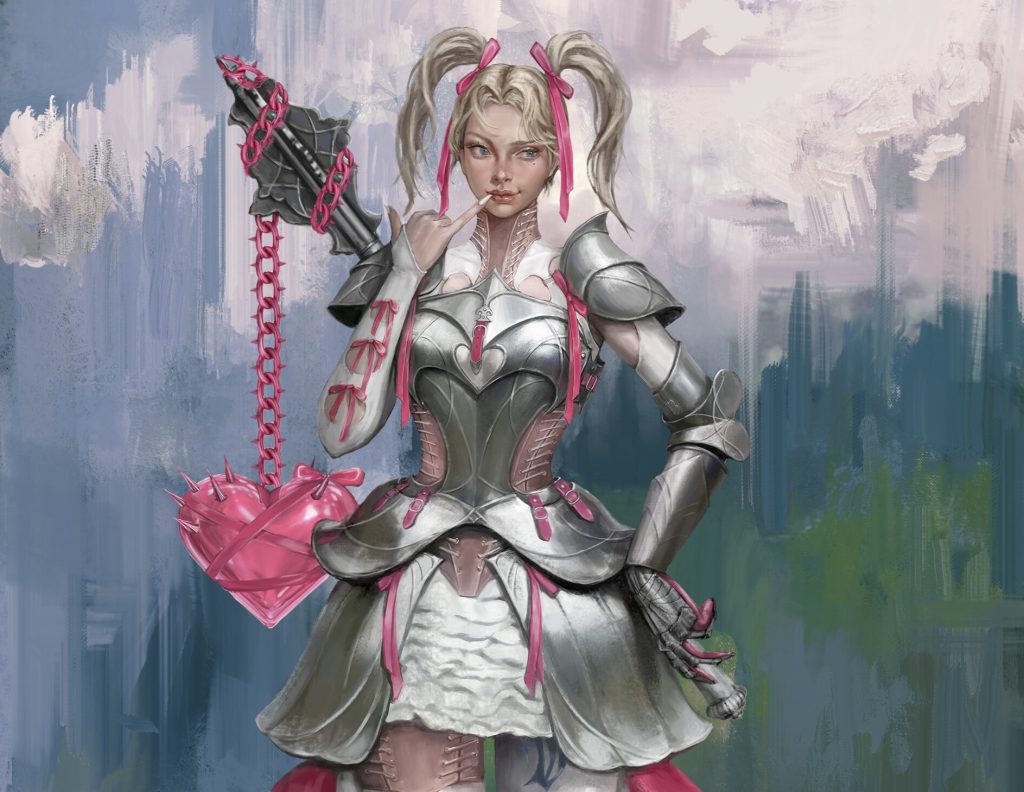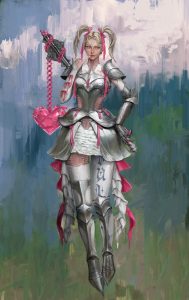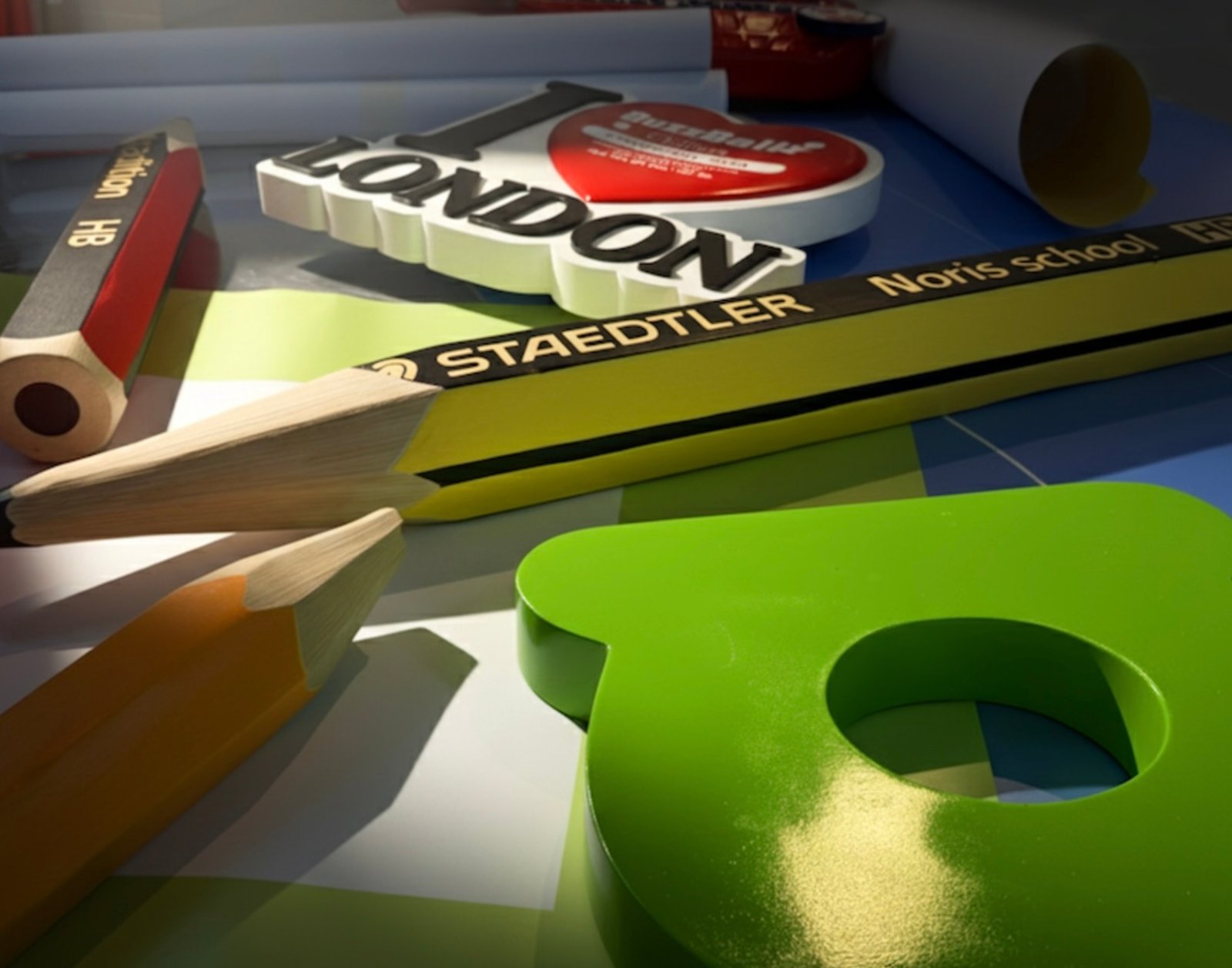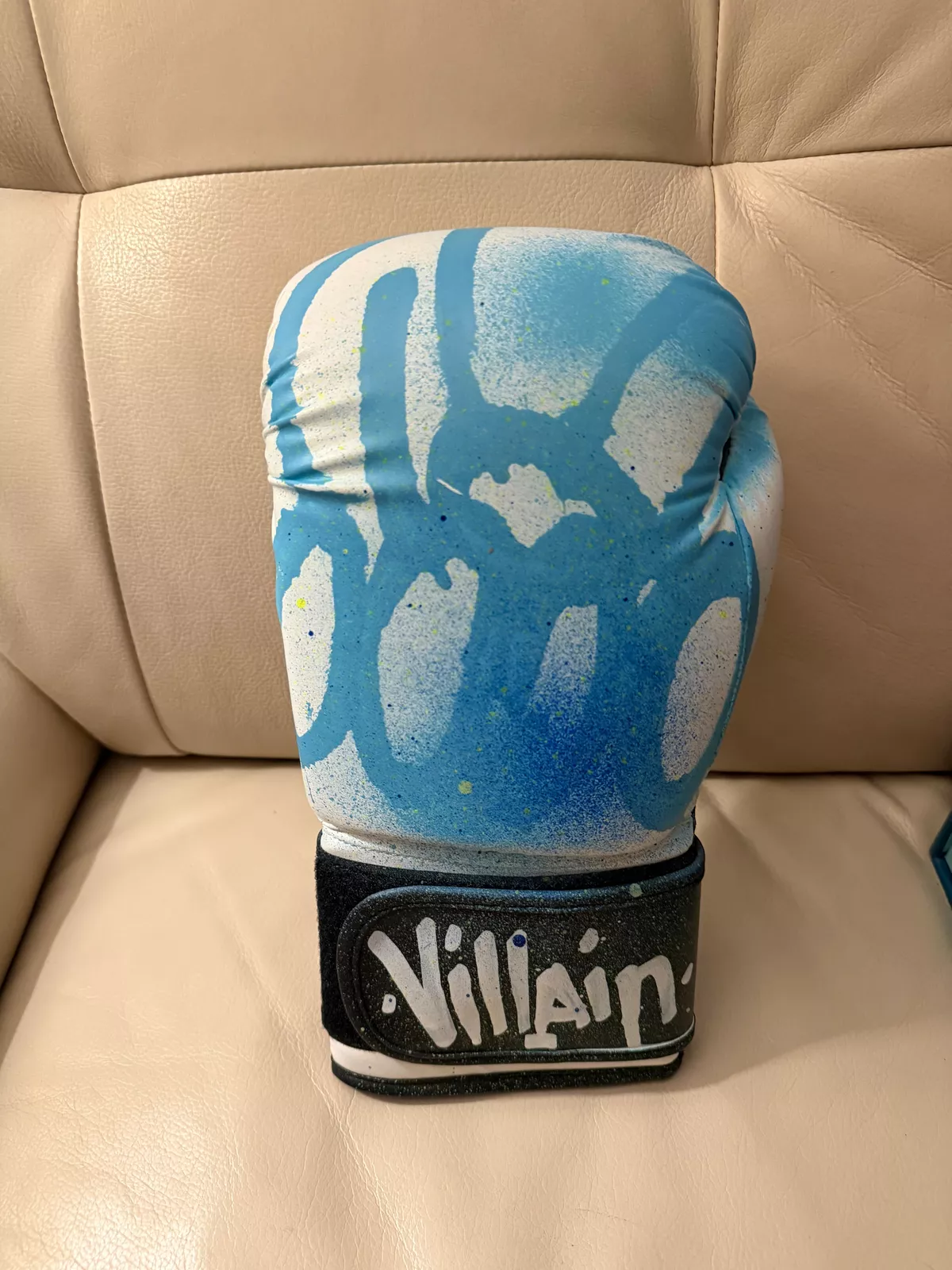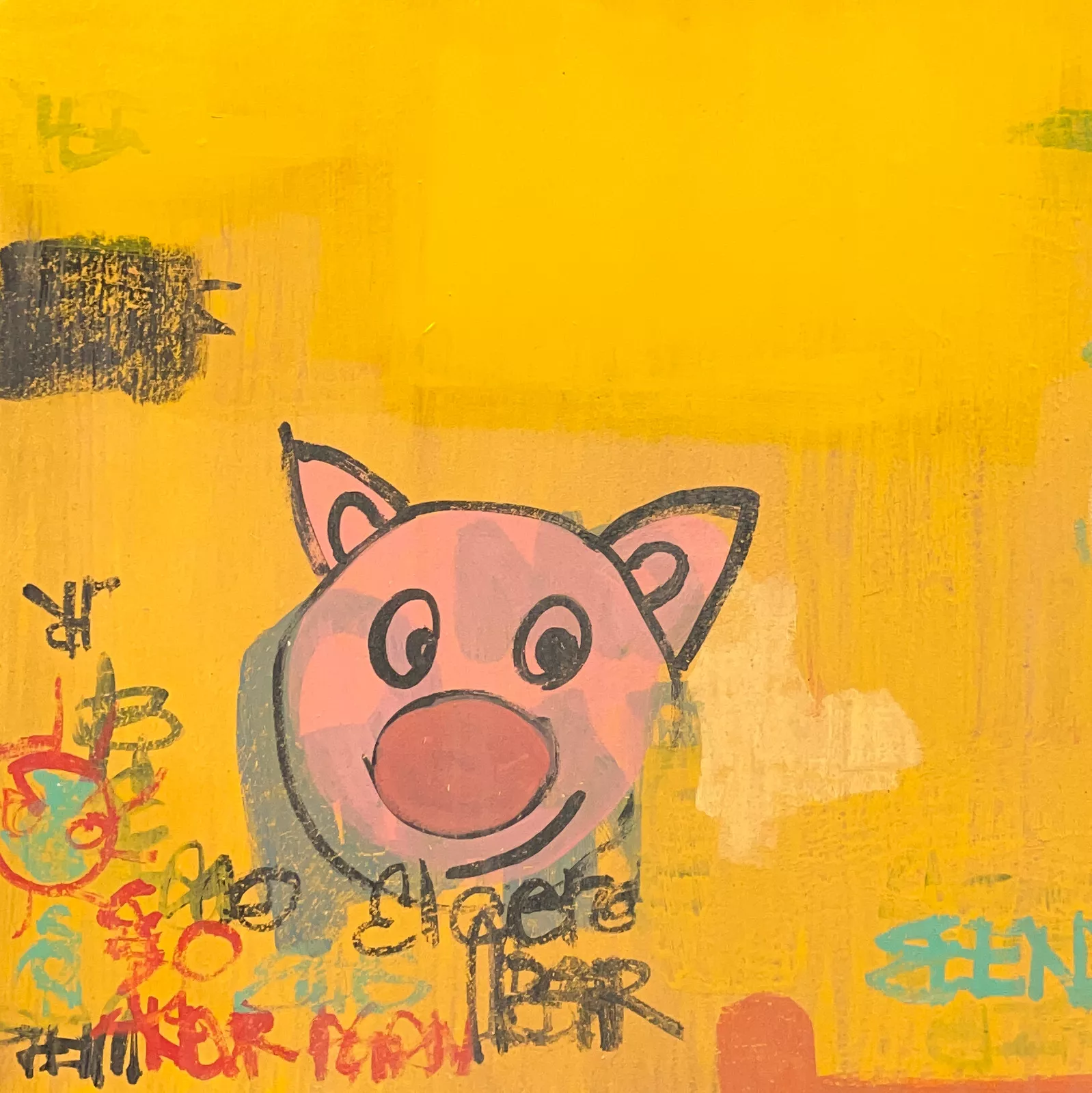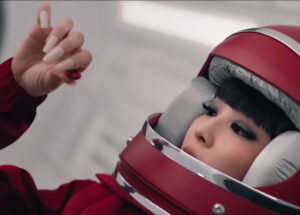Ribbon Knight by Hipzin is a breathtaking digital painting that seamlessly merges softness with steel, love with violence, and fantasy with a sense of reality so striking it almost defies the conventions of illustration. In this character design, Hipzin encapsulates the paradox of human emotion, femininity, and the eternal theme of inner conflict, offering us an arresting study in dualities.
At first glance, the character stands poised like a warrior from a dream realm—an armored figure embodying resilience and power. Yet upon closer examination, one discovers delicate pink ribbons, heart motifs, and even a plush heart-shaped flail, suggesting vulnerability, playfulness, and an almost childlike sense of affection. This combination sparks immediate intrigue: what does it mean to be both a protector and a lover? How does armor shape, conceal, and yet reveal the soul underneath?
Armor as Identity and Metaphor
Armor, historically and metaphorically, represents defense, suppression of vulnerability, and the transformation of the human form into something nearly divine. In medieval Europe, armor was not merely protection; it was a statement of social status, personal power, and even moral alignment. Chivalric knights embodied ideals of honor and protection, yet they were also instruments of violence and warfare.
Hipzin takes this centuries-old motif and reinterprets it through a modern, hyper-feminine lens. The metallic breastplate and articulated shoulder guards appear realistic in their structure, yet their design is adorned with ribbons and heart shapes, challenging the viewer to reconcile notions of femininity and martial power. In the Ribbon Knight, the traditional connotations of armor are upended; it is no longer merely an instrument of violence, but an extension of personal expression.
This juxtaposition asks a deeper question: Is strength inherently masculine, and can it coexist with softness? By introducing traditionally “feminine” colors and motifs into the cold hardness of armor, Hipzin argues that femininity and strength are not opposites but complementary forces.
The Play Violence of the Heart-Shaped Flail
One of the most striking features of the painting is the heart-shaped flail clutched in the knight’s hand. The weapon—seemingly absurd with its plush, candy-pink exterior and spiky accents—is chained in matching pink links. This design introduces a whimsical, almost toy-like quality to an otherwise deadly object, transforming a symbol of destruction into an artifact of affection and charm.
The pink chain represents a deliberate rejection of traditional metallic weaponry aesthetics, pushing the boundaries of what we consider “deadly” and “cute.” In the Ribbon Knight’s world, danger and sweetness exist in tandem, and the threat of violence is wrapped in the same package as a Valentine’s gift. This duality serves as a commentary on how society perceives femininity—often dismissing it as non-threatening or soft—when, in reality, it can embody immense power.
Expression and Body Language
The Ribbon Knight’s body language is equally complex. Her pose, with one hand on her hip and another near her lips, conveys confidence, flirtation, and introspection all at once. Her slightly parted lips and pensive eyes suggest a person deep in thought, or perhaps engaged in silent communication with an unseen adversary or admirer.
This pose evokes both classical paintings of saints in moments of revelation and modern fashion editorial stances, bridging high art and contemporary visual culture. The coquettish tilt of her head and the playful ribbons in her hair further soften her armored silhouette, making her appear simultaneously approachable and intimidating.
Ribbons: Ties that Bind and Define
The pink ribbons are arguably the painting’s most symbolic element. In literature and visual arts, ribbons often represent connection, adornment, and femininity. They are used to tie together, to decorate, and to signify belonging or affection. In Ribbon Knight, the ribbons act as a literal and metaphorical bridge between the knight’s hard exterior and her emotional interior world.
These ribbons are not merely decorative; they appear integral to the structure of the armor itself, suggesting that her identity is inextricably linked to her softness and sentimentality. They create a dynamic tension: as much as they adorn, they also bind and constrain, mirroring the social pressures often faced by women to conform to specific ideals of beauty and behavior while still projecting strength.
The Gothic Script and Tights
On her exposed thigh, we find Gothic script—its exact meaning deliberately left ambiguous. Gothic script is historically associated with medieval manuscripts, chivalric codes, and religious texts, as well as with modern subcultures such as punk and goth fashion. Its inclusion in the Ribbon Knight’s design serves to deepen the blend of old-world chivalry with contemporary rebellion.
Her stockings, with their delicate frills and subtle textures, contrast starkly with the heavy armored plates. This design decision reflects a tension between concealment and exposure, armor and intimacy. The partial leg armor juxtaposed with bare skin also hints at vulnerability beneath the protective exterior, a visual metaphor for emotional honesty hidden behind carefully constructed defenses.
Palette and Brushwork
Hipzin’s color palette is composed of soft grays, silvers, and whites, contrasted vividly with neon pink accents. This palette is not merely aesthetic; it serves as a narrative device. The metallic grays signify tradition, stoicism, and the historical legacy of the knight. The neon pink, on the other hand, symbolizes youth, rebellion, and emotional warmth.
The background, rendered in a loose, impressionistic style, further enhances the dreamlike quality of the character. The cool blues and soft greens blend with cloudy pinks, suggesting a realm beyond reality—perhaps a mental or emotional landscape rather than a physical one. The brushwork is expressive and textured, allowing the viewer’s eye to rest on the character while evoking a sense of movement and atmospheric depth.
Fashion, Fantasy, and Subversion
Ribbon Knight also reads as a critique and celebration of fashion. The ruffled underskirt, corset-like bodice, and delicate hair ribbons evoke haute couture runway shows as much as they do medieval pageantry. In this sense, the painting sits comfortably in the space between fantasy art and fashion illustration.
Hipzin plays with the idea of “armor as fashion” and “fashion as armor.” In today’s world, clothing is often used as a form of social armor, allowing individuals to express their identities while protecting themselves from external judgment. By merging these ideas visually, the artist suggests that self-presentation is both a shield and a weapon.
Psychological and Cultural Layers
On a psychological level, Ribbon Knight explores the conflicting desires for strength and affection, autonomy and connection. The heart-shaped weapon signifies love that can hurt, while the armor suggests a need to protect oneself from emotional harm. This duality resonates deeply in an age where vulnerability is both celebrated and weaponized.
Culturally, the piece touches upon the “magical girl” archetype from Japanese anime—a genre that often depicts young women who wield great power while maintaining an outwardly cute or innocent aesthetic. Characters like Sailor Moon or Madoka Kaname come to mind, embodying the paradox of vulnerability and invincibility. Hipzin’s Ribbon Knight feels like a mature evolution of this archetype, pushing it into a darker, more introspective territory.
The Power of Hybrid Identity
Ultimately, Ribbon Knight embodies the hybrid identity that so many people, especially women, navigate today. The merging of traditionally masculine and feminine symbols in her design challenges binary thinking, encouraging viewers to see power and gentleness as compatible rather than contradictory.
The artwork resonates beyond the canvas, reflecting broader societal shifts. As contemporary gender roles continue to evolve, the pressure to embody conflicting ideals becomes more pronounced. The Ribbon Knight doesn’t choose between these ideals; she integrates them into a singular, powerful identity.
Closing Reflections
Hipzin’s Ribbon Knight is a masterclass in contradiction and cohesion. It invites viewers into a lush visual narrative filled with historical echoes, culture references, and personal symbolism. From her armored exterior to her coltish ribbons and heartfelt weapon, every detail builds toward a larger meditation on power, identity, and vulnerability.
This piece is more than a character concept—it is a statement on how we protect our inner selves, how we perform our identities, and how we wield love as both shield and sword. The Ribbon Knight is at once an emblem of romantic idealism and a warrior of self-actualization.
In her, we find a mirror to our own conflicts: the desire to be strong without sacrificing tenderness, to fight without losing touch with love, to be seen as beautiful yet formidable. Hipzin captures these tensions with extraordinary grace, leaving us with an unforgettable vision of a knight who fights not only for victory but for the right to be wholly, complicatedly herself.
No comments yet.

